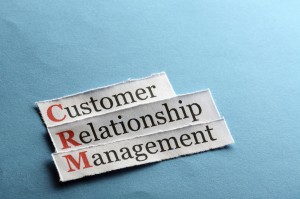
JIMMY SCHOUGAARD on 25 April, 2014 at 11:04
To understand how to best take advantage of Continuous Commerce™ as we plunge headlong into the future of eCommerce, all you have to do is look backwards.By backwards I mean literally back in time, at the old shop owner standing behind his counter. Just about everyone making a living in eCommerce could learn a lot from that guy. He knew his customers, their preferences and needs. He knew the total value of the people who came in—not only what they were buying in the here and now, but also how much and what they would buy in the weeks, months, and years to come. He knew the value of social advocacy, which back then was called word of mouth. To him it was crucial that selling was perceived as a service. When selling is a service, that creates value: It creates repeat purchases and socially amplified advocacy.
That's why, if you want to identify the pounding heart of Continuous Commerce™, look no further than customer-relationship management. From an eCommerce standpoint, CRM is where consumer-engagement strategy, technology, business logistics, and data (the "big" kind of data: transactional, historical, real-time, and third party) come together to create a relevant, personalized, and unique brand and shopping experience before, during and after the sale.
There are three core areas of CRM to focus on in a world where eCommerce is on the rise.
Practise "continued" commerce By this I mean that brands need to drop the obsession with the single transaction and the relationship that's over once UPS or FedEx informs you that the consumer has signed for the delivery. Instead, you need to focus more on the total value of the customer, and on ensuring that the customer returns and buys more—and even better, gets others to buy. Also critical: identifying those consumers possessing the greatest future value, and doing more and better for them.
Integrate channel experience off and online Brands need to thoroughly manage the end-to-end customer experience, throughout out the entire journey, in all channels, from the mobile app to the showroom floor.
Honor the before, during and after of every interaction Engage and nurture the customer to drive up traffic, improve conversion rates, and, most importantly, create an advocate who will want to return for more shopping.
It all seems very logical, you might say. But why, then, do we see so few practitioners of eCommerce doing a decent job at it, especially when most brands are so privileged in terms of which cards are in their hands? After all, there are few other industries that have access to such rich customer data—information that allows brands to know which shoppers are worth the most, and how to be more relevant to them. And brands have shown they can store and use data when they do their retargeting, or when they serve up recommendations on the go at the moments when consumers are browsing their sites.
Technology shouldn't be an obstacle, since many brands are at the forefront of what's possible in the eCommerce realm. And they have a direct relationship and channel of communication with the customer.
In the end, it all comes down to how you approach your business—your view of the consumer, and the customer. It's about taking a fresh look at your business model and mapping out where and what your real assets are. And it's about acknowledging that your customer base—and your rich knowledge of them—are increasingly your biggest assets.
For more on different aspects of commerce, head to our Continuous Commerce™ site.